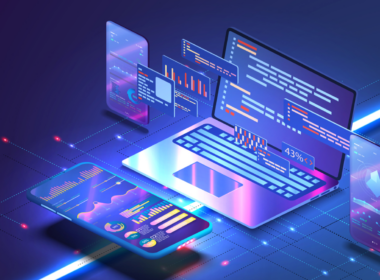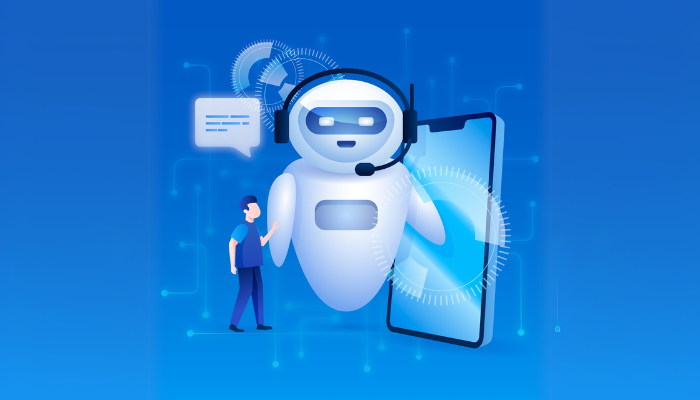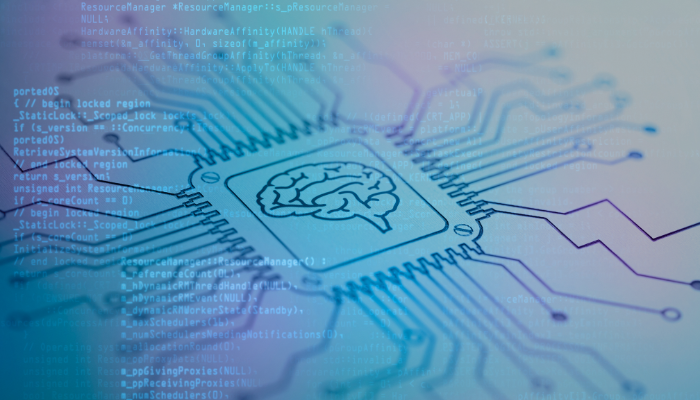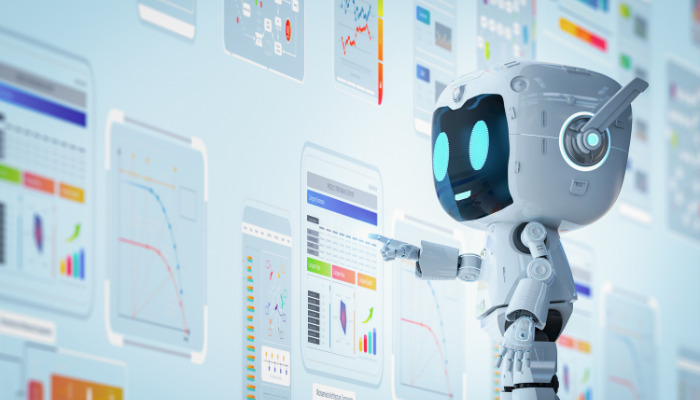Ever wished you had a virtual assistant that could handle repetitive tasks, make smart decisions, and respond like a pro—all without needing constant input? That’s exactly what AI agents do. From automating customer queries to optimizing workflows, these intelligent systems are becoming an essential part of software development.
But if you’re new to AI, the idea of building one might sound like a lot to take in. The good news? You don’t need to be an expert in machine learning to get started. With the right approach, even beginners can build AI agents that solve real problems.
In this guide, we’ll walk you through the basics, breaking everything down into simple, actionable steps. By the end, you’ll know:
- What AI agents are and how they work
- The core components that make them tick
- A step-by-step approach to building AI agents
- The best tools and frameworks to make the process easier
Let’s get started!
What is an AI Agent?
Before we get into the technical details, let’s clear up what an AI agent actually is. Simply put, an AI agent is a software program that can perceive its environment, process information, and take actions to achieve a goal—all without human intervention.
Think of it like a self-driving car. It gathers data from sensors (like cameras and radars), analyzes the road conditions, predicts obstacles, and makes decisions in real time. Similarly, AI agents in software applications collect inputs, analyze patterns, and take actions to complete tasks.
Key Characteristics of AI Agents
AI agents come in different types, but they all share a few core traits:
- Autonomy – They can operate on their own with minimal or no human intervention.
- Perception – They gather information from their environment (text, voice, images, or structured data).
- Decision-making – They analyze data and determine the best course of action.
- Adaptability – They learn from interactions and improve over time.
Types of AI Agents
AI agents aren’t one-size-fits-all. Depending on their complexity and capabilities, they can be categorized into:
1. Reactive Agents – The Simplest Form of AI
- These agents operate based on predefined rules and do not store any past experiences.
- They react to inputs in real-time but cannot learn or improve over time.
- Since they lack memory, they are fast and efficient, making them ideal for simple, rule-based tasks.
Examples:
- Spam Filters – Email systems classify incoming messages based on fixed rules (e.g., certain words trigger spam detection).
- Basic AI in Games – Non-player characters (NPCs) that react to player actions in a predictable way.
- Autonomous Sensors – Devices that trigger alarms based on environmental changes, like motion detectors.2
2. Limited Memory Agents – Learning from Past Interactions
- These agents retain past data for a short duration to improve decision-making.
- They make adjustments based on recent inputs but do not continuously evolve over long-term experiences.
- Many AI systems today fall into this category since they combine real-time reactions with short-term learning.
Examples:
- Chatbots (e.g., GPT-powered bots) – These agents remember parts of a conversation to maintain context but reset when a session ends.
- Self-Driving Cars – They analyze past few seconds of data to predict lane changes, pedestrian movement, and traffic signals.
- AI-based Customer Support – Systems that provide answers based on the latest queries but don’t retain long-term interaction history.
3. Goal-Based Agents – Evaluating Actions to Achieve a Goal
- These agents don’t just react but evaluate multiple possible actions before making a decision.
- They use search algorithms and decision trees to determine the best course of action.
- Unlike limited-memory agents, they actively consider future outcomes rather than just past interactions.
Examples:
- AI in Chess & Board Games – Programs like AlphaZero evaluate all possible moves before selecting the best strategy.
- Navigation Systems (e.g., Google Maps) – They calculate multiple routes and suggest the most efficient path.
- Robo-Advisors in Finance – AI-driven systems that assess different investment strategies to optimize returns.
4. Learning Agents
- These agents use machine learning and deep learning to continuously improve based on experience.
- They incorporate reinforcement learning, meaning they get better with feedback over time.
- Unlike limited-memory agents, they store large datasets and use past experiences to refine decision-making.
Examples:
- Netflix’s Recommendation System – Analyzes your viewing history to personalize suggestions.
- AI Assistants (e.g., Siri, Alexa, Google Assistant) – Learn user preferences and adapt responses accordingly.
- Autonomous Robots (e.g., Boston Dynamics’ robots) – Improve walking, object recognition, and task execution with each iteration.
Why AI Agents Matter
From virtual assistants like Siri and Alexa to AI-powered customer support bots, AI agents are shaping how businesses automate tasks and interact with users. They help companies scale customer service, optimize workflows, and even enhance decision-making.
Now that we know what AI agents are, let’s move on to how you can build one from scratch.
How to Build Agentic AI- 7 Steps Process
Building and training AI agents involves a systematic process of designing, developing, and deploying intelligent systems that can perceive their environment, learn from data, and make decisions to achieve specific goals.
This process typically involves several key steps, from defining the agent’s purpose to deploying it in a real-world setting. The following outlines the core stages involved in creating your own AI agent.
Step 1: Define the Purpose of Your AI Agent
Before jumping into coding, the first step is to clearly define what your AI agent will do. An AI agent without a clear goal is like a GPS without a destination—directionless and ineffective.
Ask Yourself These Questions:
- What problem will this AI agent solve?
- Who will use it, and how?
- What kind of input will it process? (Text, voice, images, etc.)
- What kind of decisions will it make?
- What level of autonomy does it need?
For example, if you’re building a customer support chatbot, its purpose might be to:
- Answer frequently asked questions.
- Direct users to the right support channels.
- Reduce response times by automating repetitive queries.
If you’re creating an AI-powered email sorter, it might:
- Categorize emails based on urgency.
- Detect spam and filter promotional content.
- Highlight priority messages.
Choosing the Right Type of AI Agent
Based on your answers, you’ll determine which AI agent type best fits your goal:
- Rule-based tasks? → Reactive Agent
- Short-term learning? → Limited Memory Agent
- Complex decision-making? → Goal-Based Agent
- Continuous learning? → Learning Agent
Also Read: Key Steps to Follow in the Project Discovery Phase
Once you’ve nailed down the purpose, you’re ready for the next step: choosing the right tools and frameworks.
Step 2: Choosing the Right Tools and Frameworks
Now that we have a clear purpose for our AI agent, the next step is selecting the right programming language, frameworks, and libraries. Your choice will depend on what your AI agent needs to do—whether it’s processing text, analyzing images, handling conversations, or making predictions.
Programming Languages for AI Development
The foundation of any AI agent is the programming language it’s built with. While AI can be developed in many languages, here are the most commonly used ones:
1. Python – The most beginner-friendly and widely used
Why? Python is easy to read and has a massive ecosystem of AI and machine learning libraries, making development faster and more efficient.
Best for: AI-powered chatbots, recommendation systems, predictive analytics, NLP-based agents, and deep learning applications.
2. JavaScript – Best for web-based AI applications
Why? If your AI agent will be embedded into a website or web app, JavaScript (with frameworks like TensorFlow.js) allows you to run machine learning models directly in the browser.
Best for: AI-powered chatbots, web-based assistants, and browser-based AI tools.
3. Java – Popular in enterprise AI applications
Why? Java is used in large-scale AI solutions, particularly in banking, healthcare, and corporate AI applications, thanks to its speed and scalability.
Best for: AI-powered fraud detection, automation tools, and enterprise-grade AI agents.
4. C++ – High-performance AI for real-time applications
Why? C++ is the go-to choice for performance-intensive applications, such as AI in gaming, robotics, and embedded systems.
Best for: AI-powered self-driving cars, robotics, and gaming AI.
AI Libraries and Frameworks
Once you’ve chosen a programming language, you’ll need specialized libraries and frameworks to power your AI agent. These tools help with natural language processing, machine learning, speech recognition, and more.
AI Tools for Natural Language Processing (NLP)
Used for chatbots, voice assistants, and text analysis.
- NLTK (Natural Language Toolkit) – Provides tools for tokenization, speech tagging, and text classification.
- spaCy – Faster and more efficient than NLTK, best for real-time NLP applications.
- Transformers (by Hugging Face) – Enables integration with pre-trained AI models like GPT, BERT, and T5, reducing the need to train from scratch.
Example Use Case: If you’re building a customer support chatbot, it will need NLP libraries to understand and process user queries.
AI Tools for Machine Learning & Model Training
These tools are essential for training AI agents to make decisions. If you’re wondering how to train AI agents, these tools enable the process by optimizing models, fine-tuning algorithms, and helping agents learn from data to make intelligent, autonomous decisions.
- TensorFlow – A powerful deep learning framework used for complex AI model training and deployment.
- PyTorch – More flexible than TensorFlow, used in AI research and advanced machine learning applications.
- Scikit-learn – Best for traditional machine learning algorithms like classification, regression, and clustering.
Example Use Case: If your AI agent needs to predict customer behavior based on past interactions, you’ll train it using Scikit-learn or TensorFlow.
AI Tools for Computer Vision
Used for image and video recognition AI agents.
- OpenCV (Open-Source Computer Vision Library) – Helps in object detection, image processing, and facial recognition.
- TensorFlow/Keras for Vision – Used for deep learning-based image classification and recognition tasks.
Example Use Case: If you’re building an AI agent that analyzes images (e.g., medical X-rays or security footage), OpenCV + TensorFlow will be your best bet.
AI Tools for Speech Recognition
Used for voice-based AI assistants.
- CMU Sphinx – A lightweight, offline speech-to-text tool.
- DeepSpeech (by Mozilla) – A deep learning-powered speech recognition engine.
- Google Speech-to-Text API – A cloud-based service for real-time voice recognition and transcription.
Example Use Case: If you’re building a voice assistant like Siri, it needs a speech recognition tool to convert spoken commands into text for processing.
AI Tools for Web-based AI Agents
Used for AI-powered web applications and chatbots.
- Rasa – An open-source chatbot framework with built-in NLP capabilities.
- Dialogflow (by Google) – A no-code/low-code AI chatbot builder.
- TensorFlow.js – A JavaScript library for running AI models directly in a web browser.
Example Use Case: If you want an AI-powered chatbot for a website, Rasa or Dialogflow would be the easiest way to implement it.
Pro Tip: If you’re new to AI, start with Python and Scikit-learn before moving on to advanced deep learning tools like TensorFlow.
Once you’ve selected the right tools, it’s time to feed your AI agent with data so it can learn and make smart decisions.
Step 3: Gathering Data
Once you’ve defined your goals and mapped out your process, the next step is to gather relevant data. This stage is about collecting both qualitative and quantitative data to fuel your process map. Here’s how to approach it:
- Identify Data Sources: Start by gathering data from internal systems like CRM, ERP, or spreadsheets, as well as external sources such as customer feedback, surveys, or industry reports.
- Gather Quantitative Data: Look for measurable metrics like sales numbers, response times, or production rates. These help pinpoint where bottlenecks or inefficiencies may exist.
- Collect Qualitative Insights: Talk to stakeholders such as team members, customers, or suppliers. These insights provide context to the numbers, helping you understand why certain outcomes occur.
- Ensure Data Accuracy: Make sure that your data is up-to-date and reliable. Outdated or incomplete information can lead to flawed insights.
By collecting the right data, you’ll be equipped to identify critical areas of improvement, which will guide the design of your future process improvements.
Step 4: Design the AI Agent
Now that you’ve identified the problem the AI agent will solve and have set clear objectives, it’s time to design the agent itself. This step involves creating a blueprint for how the AI will function, including the architecture, algorithms, and the user experience.
Here’s a breakdown of what this phase should involve:
- Choose the Right AI Model:
- Determine whether you’ll use a pre-trained AI model (like GPT, BERT, etc.) or build a custom model from scratch.
- Consider the complexity of the task and whether existing models can be adapted for your needs or if a custom-built solution is necessary.
- Design the Workflow:
- Outline the steps the AI agent will take to process user inputs and generate responses.
- Map out the interactions: what happens when the agent receives a query, how it processes the information, and how it responds.
- Think through different user flows and edge cases. How should the agent behave if it doesn’t understand something or encounters an error?
- Select the Right Technology Stack:
- Choose tools and platforms that will support the development of your AI agent. For example, you might use frameworks like TensorFlow or PyTorch for machine learning, or Dialogflow and Rasa for chatbot development.
- Select an appropriate API, programming language (Python, JavaScript, etc.), and data storage solution (SQL, NoSQL, etc.).
- Create the User Interface (UI):
- If your AI agent will have a visible user interface (such as a chatbot or virtual assistant), sketch out the user interface and user experience.
- Focus on making the interface intuitive and user-friendly. Design conversations that feel natural and ensure your agent can handle various inputs, including voice or text.
- Determine the Integration Points:
- Plan how the AI agent will interact with other systems or platforms (CRMs, databases, third-party services, etc.).
- Consider the data flow and security concerns, such as how data will be stored, accessed, and protected.
- Develop a Feedback Loop:
- Incorporate a feedback mechanism where users can provide input on the AI’s performance.
- This will be critical for improving the AI agent over time. Plan for regular updates and improvements based on user interactions.
By the end of this step, you should have a clear design of the AI agent that meets your objectives, a plan for development, and an understanding of the tools and technologies you’ll use. This design phase sets the foundation for building and training the AI agent in the next step.
Step 5: Develop the AI Agent
At this stage, you’re diving into the heart of your AI-driven incident management solution: developing the AI agent itself. This involves the creation of an intelligent, automated system capable of handling IT incidents swiftly and accurately, minimizing human intervention, and ultimately reducing downtime.
Here’s how to approach this crucial step:
1. Understand the AI’s Role in Incident Management
The AI agent you’re building must be capable of performing several tasks:
- Incident Detection: The agent should be able to detect incidents in real time by analyzing system alerts, logs, and user reports.
- Categorization and Prioritization: It needs to categorize incidents (e.g., software failure, hardware issue, network disruption) and prioritize them based on urgency, business impact, and available resources.
- Root Cause Analysis: The AI should dig into historical data, previous incidents, and logs to identify the root cause of recurring issues and even predict potential future incidents.
- Automated Response: In many cases, the AI should be able to resolve incidents autonomously (e.g., by restarting a service, patching vulnerabilities, or suggesting a solution).
- Escalation: When the agent cannot handle an issue independently, it must escalate the case to a human technician with relevant details to speed up resolution.
2. Choose the Right AI Models
The AI agent’s core functionality depends on selecting and training the right machine learning models. You’ll need to decide on a combination of models that best suit your incident management needs:
- Supervised Learning: For tasks like classification (e.g., categorizing incidents) and prioritization.
- Unsupervised Learning: To detect anomalies and potential issues in system behavior before they escalate into full-blown incidents.
- Natural Language Processing (NLP): If your agent needs to interact with users or technicians, NLP models can help it understand and generate human-like responses.
- Reinforcement Learning: For optimizing decision-making based on feedback from the environment. It’s useful for the AI agent to “learn” the most effective ways to handle certain types of incidents based on past actions and outcomes.
3. Integrate with Existing Systems
For your AI agent to be effective, it needs to integrate smoothly with your existing IT infrastructure:
- Monitoring Systems: The AI must be able to pull data from tools like New Relic, Datadog, or Nagios for real-time system monitoring.
- Ticketing Systems: It should integrate with platforms like Jira or ServiceNow to automate ticket creation, tracking, and resolution.
- Knowledge Base: The AI should have access to an internal knowledge base or FAQs to help it suggest solutions for common incidents without escalating to human teams.
4. Data Collection and Preprocessing
A robust AI agent relies on high-quality data. The more historical incident data you have, the better the agent will perform. Begin by gathering:
- Incident Logs: System logs, past tickets, and reports on previous IT incidents.
- Resolved Incidents: Historical data on how previous issues were resolved, including time-to-resolution and solution effectiveness.
- System Metrics: Data on system performance, downtime incidents, and load metrics.
Once collected, the data needs to be cleaned, structured, and labeled. For instance, categorize incidents based on severity and resolution steps. This step ensures that the agent is trained with accurate, actionable data.
5. Create a Knowledge Base
A knowledge base is essential for the AI agent to make informed decisions. You can use machine learning to automatically create knowledge from incident resolution data or manually populate the knowledge base with common issues and resolutions.
The knowledge base should include:
- Troubleshooting steps for common incidents.
- Guidelines for incident severity and priority levels.
- Standard Operating Procedures (SOPs) for escalating complex cases.
- Best practices for minimizing incident recurrence.
6. Train the AI Agent
Using the prepared data, you can now begin training the AI models. This step involves feeding the AI historical incident data and tuning the model to recognize patterns. The AI agent will learn to:
- Identify patterns in incidents: For example, recognizing that system downtime often correlates with a specific server failure.
- Predict outcomes: Based on patterns in previous data, it can start to predict incident outcomes and suggest corrective actions.
You can start with a small, controlled dataset to validate its performance and gradually scale as confidence in its accuracy grows.
Step 6: Test and Iterate
No AI agent is perfect out of the gate. You must test its performance in a controlled environment before full deployment:
- Simulated Incident Testing: Feed the AI simulated incidents to see how it handles them, and measure its ability to classify, prioritize, and resolve them.
- Human-in-the-Loop (HITL) Testing: During initial deployment, allow human technicians to review and intervene when the AI escalates incidents to them. This feedback loop will help you fine-tune the system.
- Continuous Learning: As new data comes in and more incidents are resolved, ensure the AI agent can learn from each case, improving its accuracy and performance over time.
Step 7: Monitor and Optimize
Once the AI agent is live, continual monitoring is crucial to ensure it performs well and adapts to new challenges:
- Track its incident resolution time: Are incidents being resolved faster than they were manually?
- Monitor accuracy: Is the AI correctly identifying the root cause of issues?
- Gather feedback from your team on how the AI agent’s recommendations and resolutions are impacting their workflow.
As your IT environment grows, your AI agent must be able to handle increased load and more complex incidents. Ensure the infrastructure around your AI agent can scale with the business needs.
Building an AI agent is a significant achievement. Now, ensure its success by implementing it strategically within your business.
Our blog post on AI implementation strategies provides a roadmap for success:
Steps for Successful AI Implementation Strategy in Your Business.
While developing your own AI agent is an exciting journey, it comes with its own set of challenges. Even with a clear roadmap, you’ll likely encounter roadblocks that can slow down the development process.
Here are some common challenges you may face and how to approach them:
Challenges to Overcome When Building Your Own AI Agent
Building AI agents comes with major hurdles – from messy data and tool overload to integration nightmares. These challenges can derail even well-planned projects. But with the right strategies (and expert help), they’re all solvable.
Data Quality and Availability
One of the biggest hurdles in developing an effective AI agent is ensuring access to high-quality, relevant data. Without sufficient and clean data, your AI agent may struggle to make accurate decisions or deliver meaningful results. Data preparation can be time-consuming and requires careful attention to ensure its accuracy and relevance.
Solution: Invest in robust data collection and preprocessing methods. Regularly evaluate your data for consistency, accuracy, and relevance to improve the performance of your AI agent over time.
Complexity of Choosing the Right Tools and Frameworks
With so many AI development tools and frameworks available, it can be overwhelming to choose the right ones for your project. Each tool offers unique strengths and limitations, and the wrong choice can lead to inefficiencies or system incompatibility.
Solution: Start by evaluating your agent’s requirements carefully. Are you building a conversational AI? Or an agent that processes large datasets? Research and choose tools that align with your business objectives and scalability needs.
Training and Fine-Tuning the AI Model
Even with the right data and tools, training your AI agent can be a long and iterative process. Ensuring that your AI learns effectively without overfitting or underfitting the data can be tricky, and it may require constant fine-tuning.
Solution: Use techniques like cross-validation and hyperparameter tuning to improve model performance. Regularly monitor training progress and refine models as needed to ensure accuracy and relevance.
Integration with Existing Systems
Once your AI agent is trained, integrating it with your existing business systems can present technical challenges. Ensuring seamless communication between the AI agent and your other platforms, such as CRM or ERP systems, is crucial for real-time decision-making and automation.
Solution: Plan your AI agent’s integration process early. Work with developers familiar with your existing tech stack and consider using APIs or middleware for smoother integration.
Maintaining AI Agent Performance
AI agents aren’t set-and-forget solutions. They require continuous monitoring and adaptation to stay relevant as new data comes in or business conditions change. If your agent’s performance starts to dip over time, it can lead to inaccuracies or suboptimal results.
Solution: Implement a feedback loop that allows the AI agent to continuously learn and improve based on real-time data. Regular updates and refinements are essential for maintaining performance.
Stuck on any of these?
Get a live solution walkthrough →
Conclusion: Your AI Agent Awaits!
Creating your own AI agent might have seemed like a daunting task at first, but hopefully, this guide has demystified the process. We’ve broken down the journey into manageable steps, from defining your agent’s purpose and selecting the right tools to training, testing, and deploying it effectively. You now understand how to:
- Define the agent’s objective and scope
- Choose the appropriate stack
- Gather and prepare your training data
- Select the right development platform and libraries
- Train, evaluate, and refine your agent’s performance
- Deploy and integrate your AI agent
But remember, building a successful AI agent is an ongoing process. Continuous learning, refinement, and adaptation are key to ensuring its effectiveness and relevance. Following AI agent development best practices will help keep your AI agent evolving and performing optimally.
At Codewave, we specialize in helping businesses like yours use the power of AI. With years of experience in developing custom AI solutions, we can guide you through every stage of your AI agent’s lifecycle, from concept to deployment and beyond.
Why Choose Codewave for Your AI Agent Development?
- Expertise: We possess deep knowledge of the latest AI/ML techniques and tools.
- Custom Solutions: We tailor our development approach to your specific needs and goals.
- End-to-End Support: We provide comprehensive assistance, from initial consultation to ongoing maintenance.
- Real-World Experience: We’ve successfully delivered numerous AI agent solutions for diverse industries.
- Focus on Results: We’re committed to building AI agents that deliver tangible business value.
Don’t let your AI agent vision remain just an idea. Contact us today, and let’s collaborate to bring your intelligent agent to life. We’ll help you navigate the complexities of AI development and empower you to build a truly impactful AI agent.
Codewave is a UX first design thinking & digital transformation services company, designing & engineering innovative mobile apps, cloud, & edge solutions.







